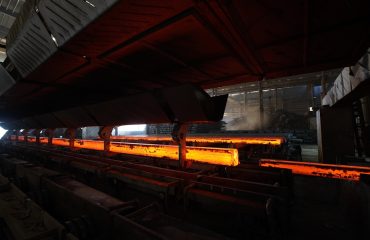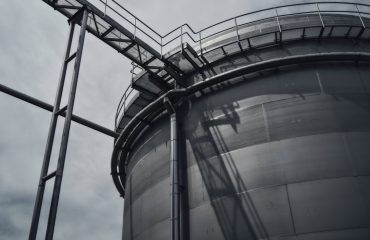Galvanized steel, a ubiquitous material in construction, infrastructure, and manufacturing, owes its widespread use to its exceptional corrosion resistance. This property stems from a protective zinc coating that safeguards the underlying steel from the ravages of rust and degradation. But how exactly does this work, and what factors influence its effectiveness? This comprehensive guide delves into the intricacies of galvanized steel’s corrosion resistance, exploring its mechanisms, applications, limitations, and the conditions affecting its longevity.
The Science Behind Galvanized Steel’s Corrosion Protection
The corrosion resistance of galvanized steel is primarily attributed to the sacrificial protection offered by the zinc coating. Zinc is more electrochemically active than steel (iron). When exposed to the environment, zinc readily oxidizes (rusts) before the steel. This means that even if the zinc coating is scratched or damaged, the exposed steel remains protected. The zinc acts as an anode, sacrificing itself to protect the steel cathode. This electrochemical process, known as galvanic corrosion, ensures that the steel remains largely unaffected by environmental factors like moisture and oxygen, which are the primary drivers of steel corrosion.
The thickness of the zinc coating plays a crucial role in determining the duration of protection. Heavier coatings provide longer-lasting protection, particularly in harsh environments. The type of galvanizing process (hot-dip galvanizing being the most common and effective) also significantly influences the coating’s quality and durability.
Applications Where Galvanized Steel Excels
The exceptional corrosion resistance of galvanized steel makes it ideally suited for a wide range of applications, particularly those involving exposure to the elements. Some prominent examples include:
- Construction: Roofing, siding, structural components, fencing, and handrails.
- Automotive: Body panels, undercarriage components, and exhaust systems (though often combined with other corrosion-resistant treatments).
- Infrastructure: Bridges, pipelines, transmission towers, and guardrails.
- Manufacturing: Appliances, storage tanks, and various industrial components.
- Agriculture: Fencing, storage bins, and greenhouse structures.
In each of these applications, the ability of galvanized steel to withstand corrosion without requiring extensive maintenance is a significant advantage.
Limitations and Factors Affecting Longevity
While galvanized steel offers excellent corrosion resistance, it’s not impervious to degradation. Several factors can influence its longevity and effectiveness:
- Environmental Conditions: Highly corrosive environments, such as those with high salinity (coastal areas) or industrial pollutants, can accelerate corrosion, even with galvanized steel. Acid rain can also significantly reduce the lifespan of the zinc coating.
- Coating Thickness: Thinner coatings will naturally offer less protection and a shorter lifespan compared to thicker coatings.
- Surface Preparation: Improper surface preparation of the steel before galvanizing can compromise the coating’s adhesion and lead to premature failure.
- Mechanical Damage: Scratches, abrasions, and other forms of mechanical damage can expose the underlying steel, compromising the sacrificial protection offered by the zinc.
- Temperature Fluctuations: Extreme temperature variations can cause stress on the zinc coating, potentially leading to cracking and reduced effectiveness.
Understanding these limitations is crucial for selecting the appropriate grade of galvanized steel for a given application and anticipating its lifespan.
Comparing Galvanized Steel to Other Corrosion-Resistant Materials
Galvanized steel is often compared to other corrosion-resistant materials like stainless steel and weathering steel. Stainless steel achieves corrosion resistance through alloying elements that create a passive oxide layer. While offering excellent corrosion resistance, stainless steel is typically more expensive than galvanized steel. Weathering steel, also known as corten steel, develops a protective rust layer over time, but this process is slower than the sacrificial protection offered by zinc. The choice between these materials depends on the specific application, budget constraints, and desired lifespan.
Maintaining and Extending the Lifespan of Galvanized Steel
While galvanized steel is inherently corrosion-resistant, proper maintenance can significantly extend its lifespan. Regular inspection for damage, prompt repair of scratches or abrasions, and cleaning to remove corrosive substances can help preserve the zinc coating and prevent premature failure. In harsh environments, additional protective coatings or periodic repainting may be necessary to further enhance corrosion resistance. Proper handling and storage, avoiding damage during transportation and installation, are also crucial for maximizing the lifespan of galvanized steel components.
In conclusion, the remarkable corrosion resistance of galvanized steel stems from the sacrificial protection offered by its zinc coating. Understanding the science behind this protection, its applications, limitations, and factors influencing its longevity is crucial for engineers, designers, and anyone working with this vital material. By employing proper selection, installation, and maintenance practices, the exceptional corrosion resistance of galvanized steel can be leveraged to ensure the long-term durability and performance of countless structures and products.
Tags: galvanized steel, corrosion resistance, zinc coating, galvanization, steel protection




